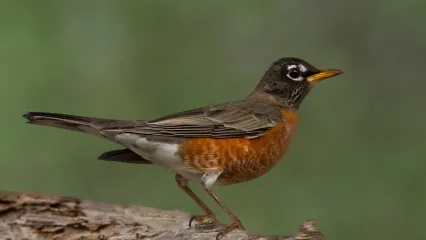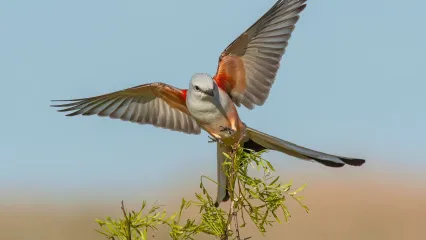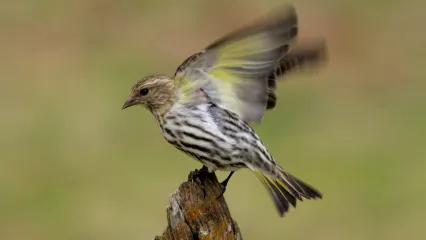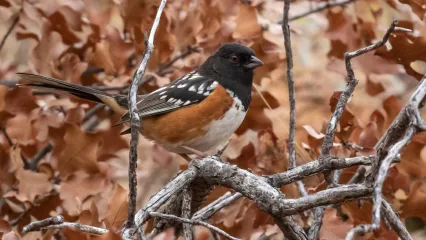
Description
The familiar robin has a grayish-brown back, white throat and orangish-red (males) to reddish-orange (females) chest and belly. Each eye is incompletely surrounded by a partial white eye ring. In adult males, the head color is noticeably darker than the back. American robins can be confused with the eastern and spotted towhees, except that these species have white plumage on the lower breast and belly, and bills are cone-shaped like an ice cream cone.
Size
Approximately 8 – 11 inches in length. Wingspan of 12 – 15.7 inches.
Habitat
Robins are found statewide, year-round. These birds occupy a wide range of habitats and can be found in both urban and natural areas. They are especially attracted to fruit-producing trees and shrubs and wooded areas.
Life Cycle
American robins nest in a variety of locations including trees, gutters, and even on top of outdoor light fixtures. Three to five blue eggs are incubated for about two weeks; chicks leave the nest about two weeks after hatching. Robins feed primarily on insects, earthworms and fruit.
How To Observe
Robins may be alone or in flocks of 50 or more birds. They tend to feed within 10 feet of the ground or on the ground.
Though robins are common in urban and residential areas, they can be difficult to attract to backyard feeders. Offering fruit (dried berries, raisins, currants, and apple slices) on a platform feeder may be effective. Robins are most easily attracted by providing water and planting fruit-bearing trees.


